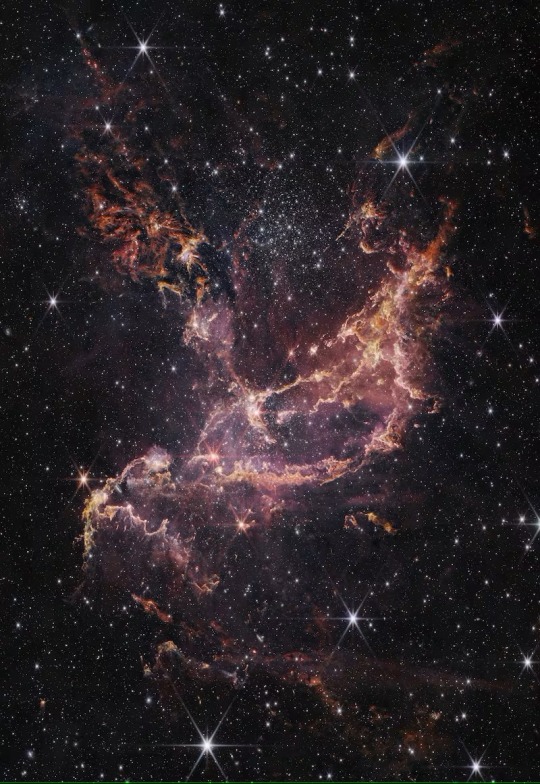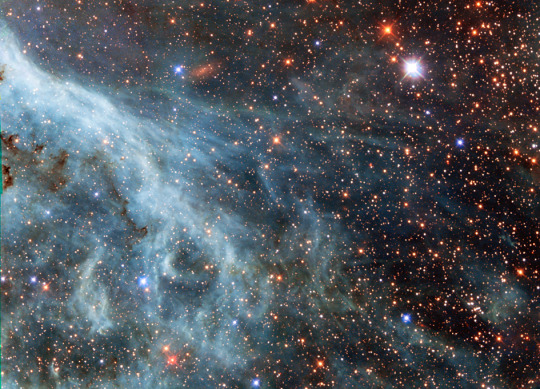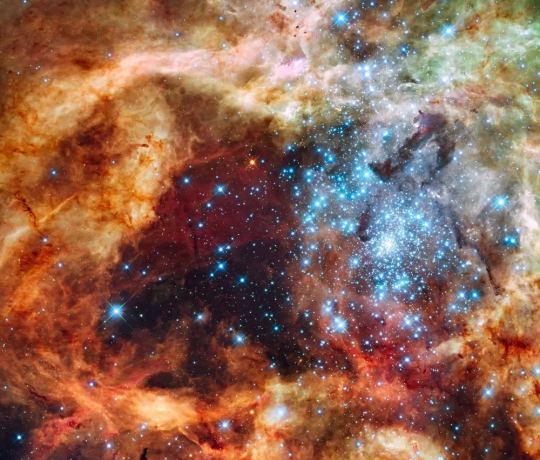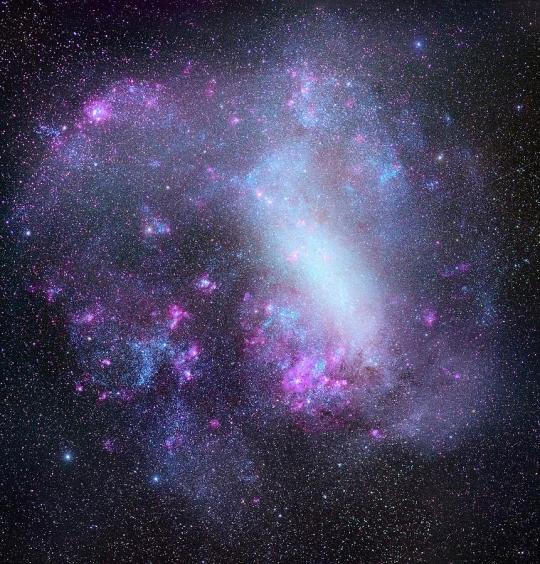#magellanic cloud
Explore tagged Tumblr posts
Text

A cluster of stars in the Small Magellanic Cloud
Image taken by the James Webb Space Telescope. PA
#art#cosmos#cosmic#universe#blast#space#photography#stars#light#cluster#cloud#magellanic cloud#james webb space telescope#PA
297 notes
·
View notes
Text


Within the LMC Galaxy
4K notes
·
View notes
Text

Summer Milky Way at Damboring Lakes, Western Australia
Nikon d810a - 35mm - ISO 3200 - f/2.0 Foreground: 7 x 15 seconds Sky: 17 x 25 seconds H-Alpha: 2 x 60 seconds iOptron SkyTracker
#astrophotography#Milky Way#stars#space#night#sky#astronomy#landscape astrophotography#galaxy#Carina#Gum Nebula#Magellanic Clouds#Western Australia#nikon#d810a#iOptron#SkyTracker#salt lake#Damboring#outback
731 notes
·
View notes
Text

A Dwarf Galaxy, the Small Magellanic Cloud ©
#galaxy#space#astrophotography#nasa#hubble telescope#universe#cosmos#astronomy#planet#stars#solar system#night sky#small magellanic cloud
666 notes
·
View notes
Text

This young star cluster shines like a kaleidoscope thanks to the James Webb Space Telescope's near- and mid-infrared instruments. NGC 602 is in our neighboring dwarf galaxy, the Small Magellanic Cloud. Credit: ESA/Webb, NASA, CSA.
#space#astronomy#stsci#science#nasa#universe#nasawebb#james webb space telescope#jwst#webb telescope#webb space telescope#infrared#small magellanic cloud#colorful#kaleidoscope
302 notes
·
View notes
Text


𝐉𝐨𝐚𝐧 𝐎𝐟 𝐀𝐫𝐜 𝐆𝐞𝐫𝐚𝐫𝐝 𝐀𝐬 𝐒𝐍𝟏𝟗𝟖𝟕𝐚 ✩
#spacerard#space comparison#mcr ecosystem#mcr#my chemical romance#astronomy#space#gerard way#joan of arc gerard#supernova remnant#supernova#large magellanic cloud#mcrblr#swarm tour#swarm era#gee#stars
87 notes
·
View notes
Photo

Two galaxies suspended over an aurora by u/ThatAstroGuyNZ via r/Stargazing
#galaxies#astrophotography#aurora#aurora australis#night#sky#skyporn#space#night sky#stargazing#thatastroguynz#u/thatastroguynz#r/stargazing#reddit#photographers on reddit#stars#astronomy#photography#landscape#seascape#elements#nature#beauty#aesthetic#nz#new zealand#large magellanic cloud#small magellanic cloud#lmc#smc
91 notes
·
View notes
Text

Photograph of the Large Magellanic Cloud, n.d.
80 notes
·
View notes
Text

Supernova 1987a Fireball Resolved - January 24th, 1997.
"During 1987, the most notable supernova of modern times was observed. In February of that year, light reached Earth from a star which exploded in the nearby Large Magellanic Cloud. The explosion catapulted a tremendous amount of gas, light, and neutrinos into interstellar space. When observed by the Hubble Space Telescope (HST) in 1994, large, strange rings were discovered, whose origin is still mysterious, although thought to have been expelled even before the main explosion. More HST observations, that are shown in the inset, however, uncovered something actually predicted: the expanding fireball from the exploding star. The above high resolution images resolve two blobs flung out from the central explosion."
#nasa#space#cosmos#universe#astronomy#astrophysics#astrophotography#supernova#large magellanic cloud
35 notes
·
View notes
Text

Tarantula Nebula !
This is a Hubble Space Telescope image of a star-forming region containing massive, young, blue stars in 30 Doradus, the Tarantula Nebula. Located within the Large Magellanic Cloud, this is one of the regions observed by a newly-completed survey named ULLYSES.
Some stars are so massive and so energetic that they’re a million times brighter than the Sun. This type of star dominated the early Universe, playing a key role in its development and evolution. The first of its kind are all gone now, but the modern Universe still forms stars of this type.
Image Credit: NASA, ESA, STScI, Francesco Paresce (INAF-IASF Bologna), Robert O'Connell (UVA), SOC-WFC3, ESO
#art#cosmos#cosmic#universe#blast#space#photography#stars#nebula#tarantula nebula#hubble space telescope#30 doradus#magellanic cloud#ullyses#nasa#esa
131 notes
·
View notes
Text


[ This long-duration photograph looks out a window on the SpaceX Dragon crew spacecraft to the Large and Small Magellanic Clouds, two irregular dwarf galaxies, as the International Space Station orbited 260 miles above the Pacific Ocean off the coast of Mexico. Credit: NASA/Don Pettit ]

[ This long-duration photograph looks out a window on the SpaceX Dragon crew spacecraft to the Large and Small Magellanic Clouds, two irregular dwarf galaxies, as the International Space Station orbited 260 miles above the Pacific Ocean northeast of Australia. Credit: NASA/Don Pettit ]

[ This long-duration photograph looks out a window on the SpaceX Dragon crew spacecraft to the Milky Way as the International Space Station orbited 262 miles above the Pacific Ocean northeast of New Zealand. Credit: NASA/Don Pettit ]
#SpaceX Dragon#Milky Way#International Space Station#Small Magellanic Cloud#Large Magellanic Cloud#Magellanic Clouds#space#astronomy#astrophotography#religion is a mental illness
41 notes
·
View notes
Text



Large Magellanic Cloud
2K notes
·
View notes
Text

Summer Milky Way at Lake Ninan, Western Australia
Nikon d810a - 50mm - ISO 6400 - f/2.8 Foreground: 7 x 6 seconds Sky: 24 x 30 seconds iOptron SkyTracker
#astrophotography#stars#space#night#sky#landscape astrophotography#astronomy#milky way#galaxy#airglow#Crux#Carina#nebula#Magellanic Clouds#dead tree#salt lake#nikon#d810a#iOptron#SkyTracker#western australia#Lake Ninan
1K notes
·
View notes
Text
Astronomy Picture of the Day
2005 January 18

NGC 346 in the Small Magellanic Cloud
Credit: A. Nota (ESA/STScI) et al., ESA, NASA
A satellite galaxy of the Milky Way, the Small Magellanic Cloud (SMC) is a wonder of the southern sky, a mere 210,000 light-years distant in the constellation Tucana. Found among the SMC's clusters and nebulae NGC 346 is a star forming region about 200 light-years across, pictured above by the Hubble Space Telescope. Exploring NGC 346, astronomers have identified a population of embryonic stars strung along the dark, intersecting dust lanes visible here on the right. Still collapsing within their natal clouds, the stellar infants' light is reddened by the intervening dust. A small, irregular galaxy, the SMC itself represents a type of galaxy more common in the early Universe. But these small galaxies are thought to be a building blocks for the larger galaxies present today. Within the SMC, stellar nurseries like NGC 346 are also thought to be similar to those found in the early Universe.
Authors & editors: Robert Nemiroff (MTU) & Jerry Bonnell (USRA)
NASA Official: Jay Norris.
A service of: LHEA at NASA / GSFC
& Michigan Tech. U.
21 notes
·
View notes
Text

Hubble witnessed a dwarf galaxy crashing through the Milky Way galaxy’s gaseous halo and living to tell the tale … though a bit worse for wear! https://bit.ly/3YCVcUE
#space#astronomy#stsci#science#nasa#universe#hubble#hubble space telescope#hubble telescope#milky way#galaxy#large magellanic cloud
58 notes
·
View notes
Text

The Tarantula Nebula (30 Doradus) in the Large Magellanic Cloud // Anthony Knepp
#astronomy#astrophotography#nebula#emission nebula#star-forming region#tarantula nebula#30 Doradus#NGC 2070#large magellanic cloud#LMC#dorado
87 notes
·
View notes